|
John Tyman's Cultures in Context Series NEPAL |
|
|
|
724 - 755 |
|
John Tyman's Cultures in Context Series NEPAL |
|
|
|
724 - 755 |
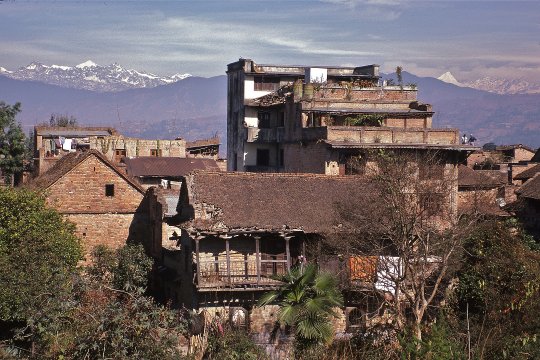 |
| 725. On good days, when there are breezes, the mountains are clearly visible from many parts of the city. |
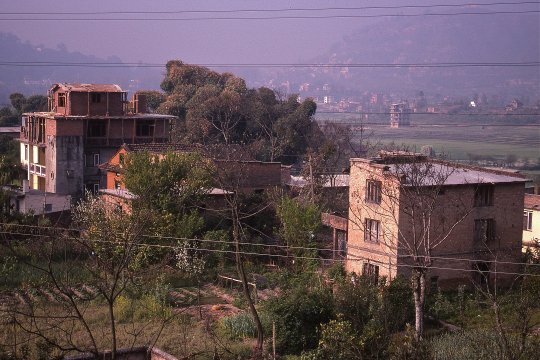 |
| 726. But they are often obscured by atmospheric pollution, and people with respiratory problems wear smog masks -- much as they might in Los Angeles or Mexico City. |
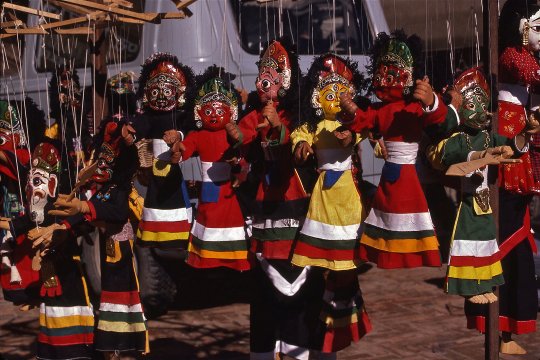 |
| 730. There are a host of stall-holders who cater to the needs of visitors, whether for souvenirs or for puja supplies. |
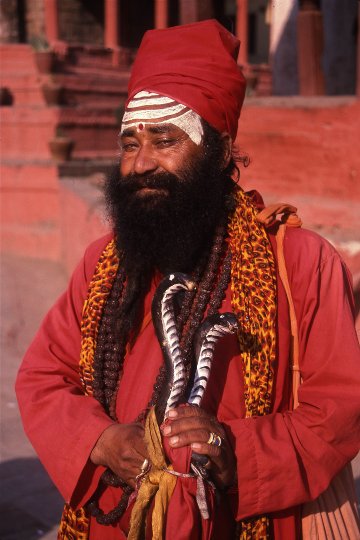 |
| 731. Others pose for photographs -- like this suspiciously well-dressed sadhu in Durbar Square. |
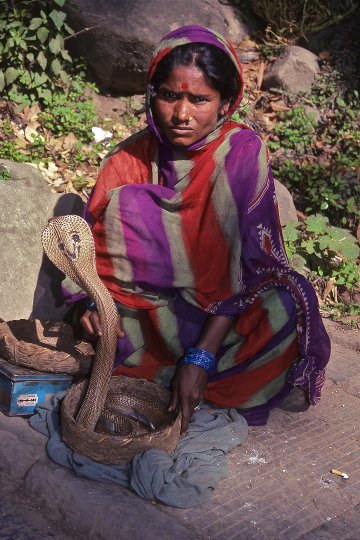 |
| 732. And there are even snake-charmers, like this woman at the entrance to the temple at Swayambhunath. |
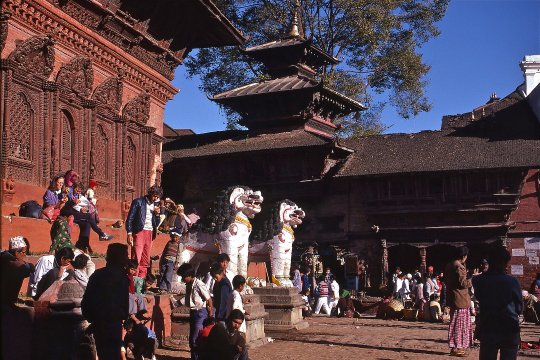 |
| 734. It has royal palaces (or buildings that were royal palaces when Nepal was a Hindu kingdom) and a host of temples and shrines, even a home for a ĒLiving GoddessĒ. |
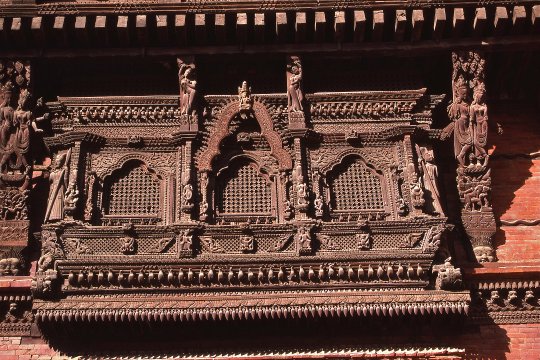 |
| 736. Many of the old wooden buildings are beautifully carved. (Windows of former royal palace) |
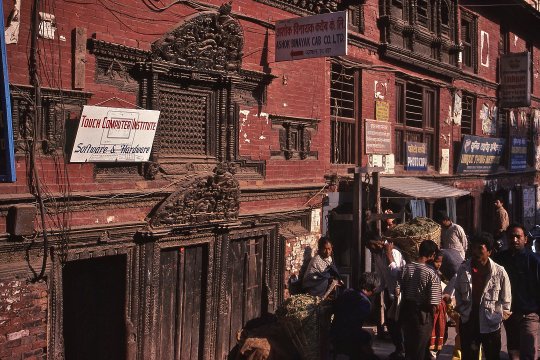 |
| 737. But many are occupied today by companies providing technical support -- like computing, photocopying and typing. |
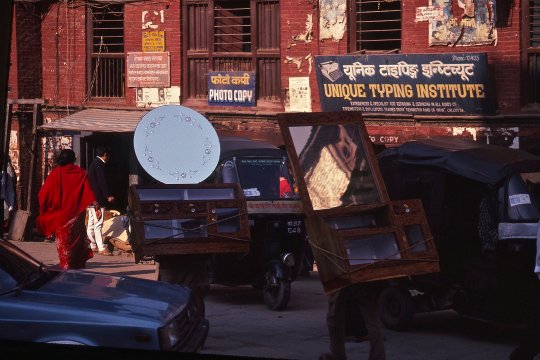 |
| 738. Yet, alongside such modern services, furniture may well be delivered on the back of human carrier. |
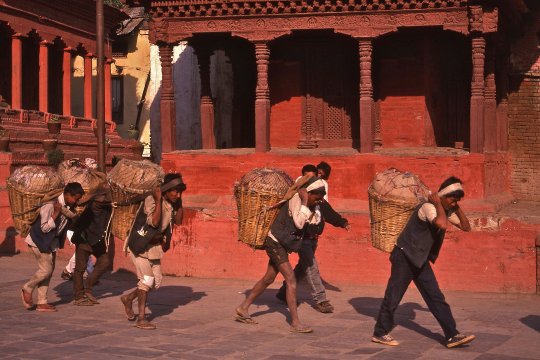 |
| 739. And at least some of the freight from rural areas still arrives in a basket. |
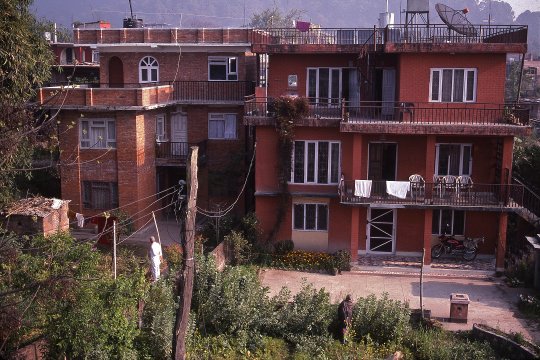 |
| 744. Gopal's brother-in-law Kirti Subedi had a large house in just such a suburb of Kathmandu: and I stayed there briefly. |
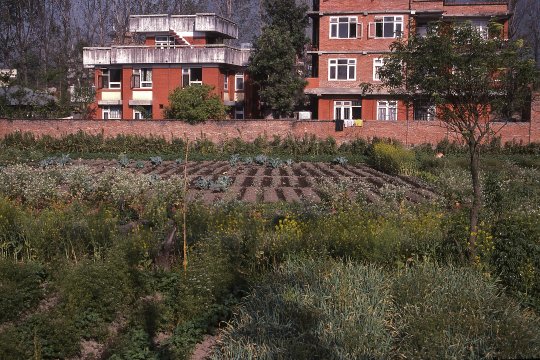 |
| 745. The land on which it had been built had been farmed till recently. |
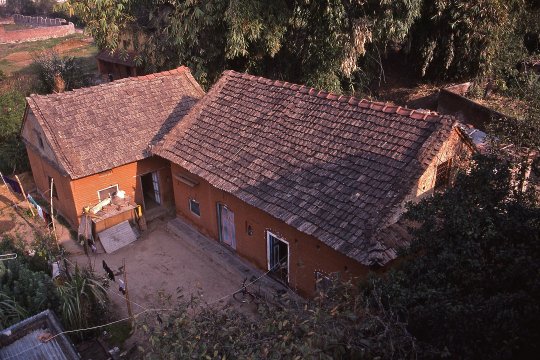 |
| 746. From our roof we could see the farmerís house, and the land the family still worked. |
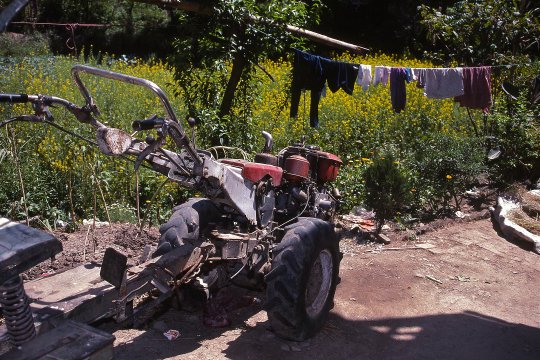 |
| 747. They had a rotary cultivator to help with farm work. |
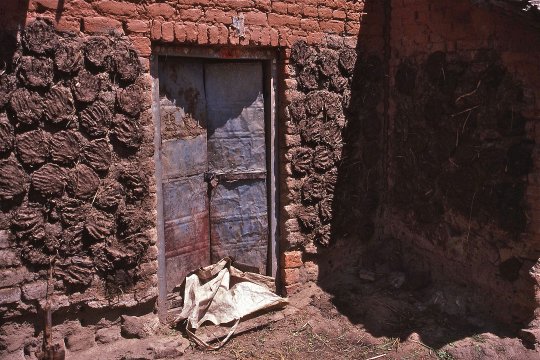 |
| 748. But, as in India, they formed patties from their cow dung and dried them in the sun for use as fuel in cooking stoves -- in the absence of much firewood. |
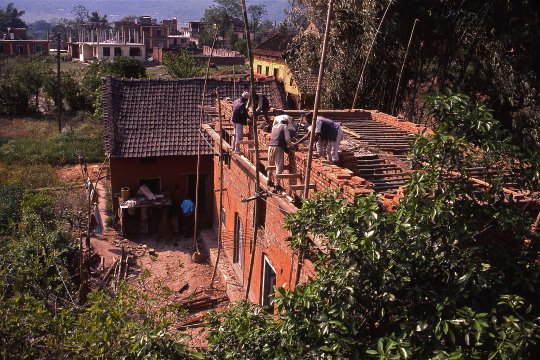 |
| 749. They were losing land progressively, however, as the city expanded. |
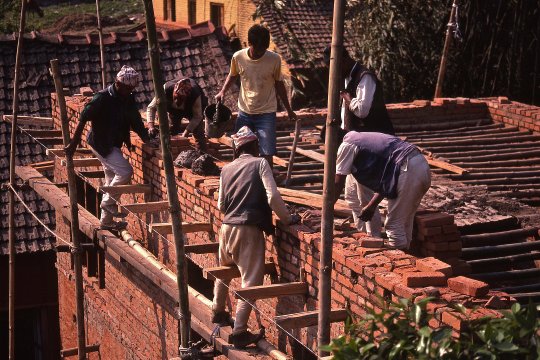 |
| 750. In contrast to village life, homes here were built by professionals. They used both tiles and bricks, and worked with a minimum of bamboo scaffolding. |
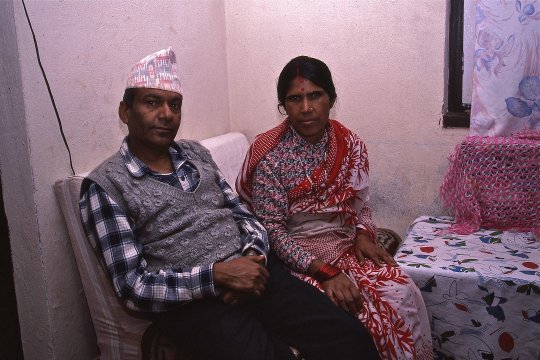 |
| 751. Kirti himself was a senior Customs Officer in the city and he presided over an extended family much as he would have done in a village, while enjoying the benefits of a salaried position. |

![]()
Text, photos and recordings
by John Tyman
Intended for Educational Use
Only.
Contact Dr. John Tyman at johntyman2@gmail.com
for more information regarding
licensing.
![]()
www.hillmanweb.com
Photo processing, Web page layout,
formatting and hosting by
William
Hillman ~ Brandon, Manitoba ~ Canada